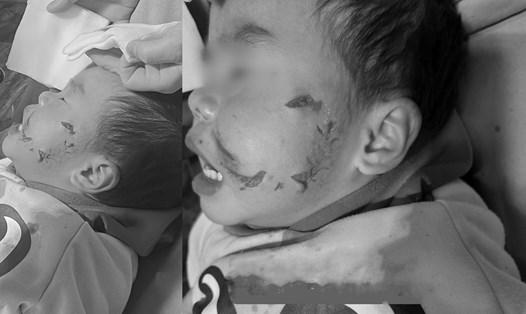Mr. N said that after being bitten by a dog, he was vaccinated and treated the wound at a medical facility. Despite being stitched and treated many times, the wound still did not heal, always leaking and forming a large mass of the pulp. He was recently treated for injuries but the wound quickly recurred.
When admitted to the Central Hospital for Tropical Diseases, Mr. N had a complex medical history, including diabetes and prolonged use of antibiotics, reducing the ability to heal wounds.
Dr. Duong Manh Chien - the person directly treating the wound - commented that this is a long wound that does not heal, with two main risks: infection from animal bites and chronic inflammation that can lead to carcination. If you continue to cut and stitch like before, the wound will recur and never heal. Therefore, this time, the patient was completely treated with plastic surgery.
The doctor removed the entire inflammatory organization and damaged skin area, including the surrounding skin, even though there were no obvious signs, to eliminate the risk of infection. However, the damage lies in the heel - an area with little excess skin to cover it - making restoration challenging. If not covered properly, the heel tendon can be exposed, causing necrosis or tendon rupture, leading to loss of mobility.
To repair the damage, doctors use sural Vanilla Shaping - removing the skin with a feeding vessel from the calf to ensure blood supply, helping the wound recover quickly. The blood vessels were kept intact to ensure the surgical live webs. If necessary, thin skin can be transplanted from the groin area.
After 14 days of post-operative surgery, the wound fully recovered, with no more leakage or recurring infections. The patient's health is stable and he has returned to normal activities. This is a great success in treating a wound that has lasted for a year, and has had many interventions but failed.
Dr. Chien recommends: When bitten by a dog, cat or animal, you need to get rabies vaccination, get a tetanus shot and do not be subjective with small wounds. In particular, if the wound heals for a long time, shows signs of infection or is in a sensitive location such as the feet and heels, it is necessary to go to the hospital for timely treatment to avoid dangerous complications.




